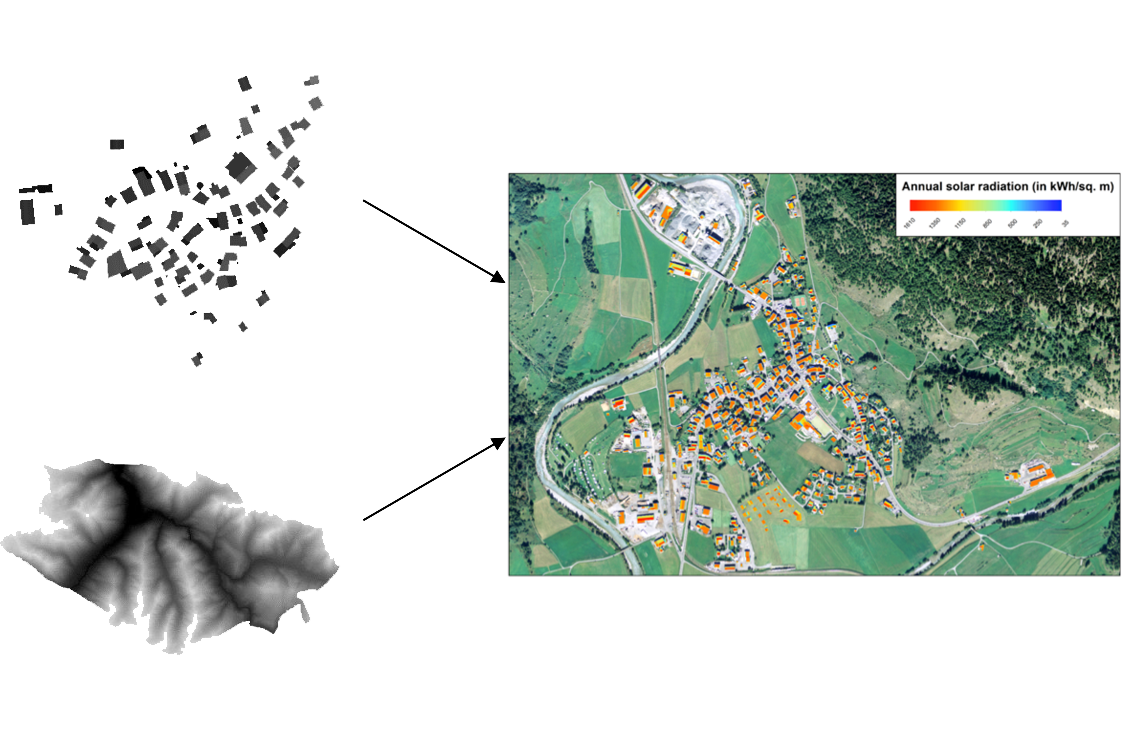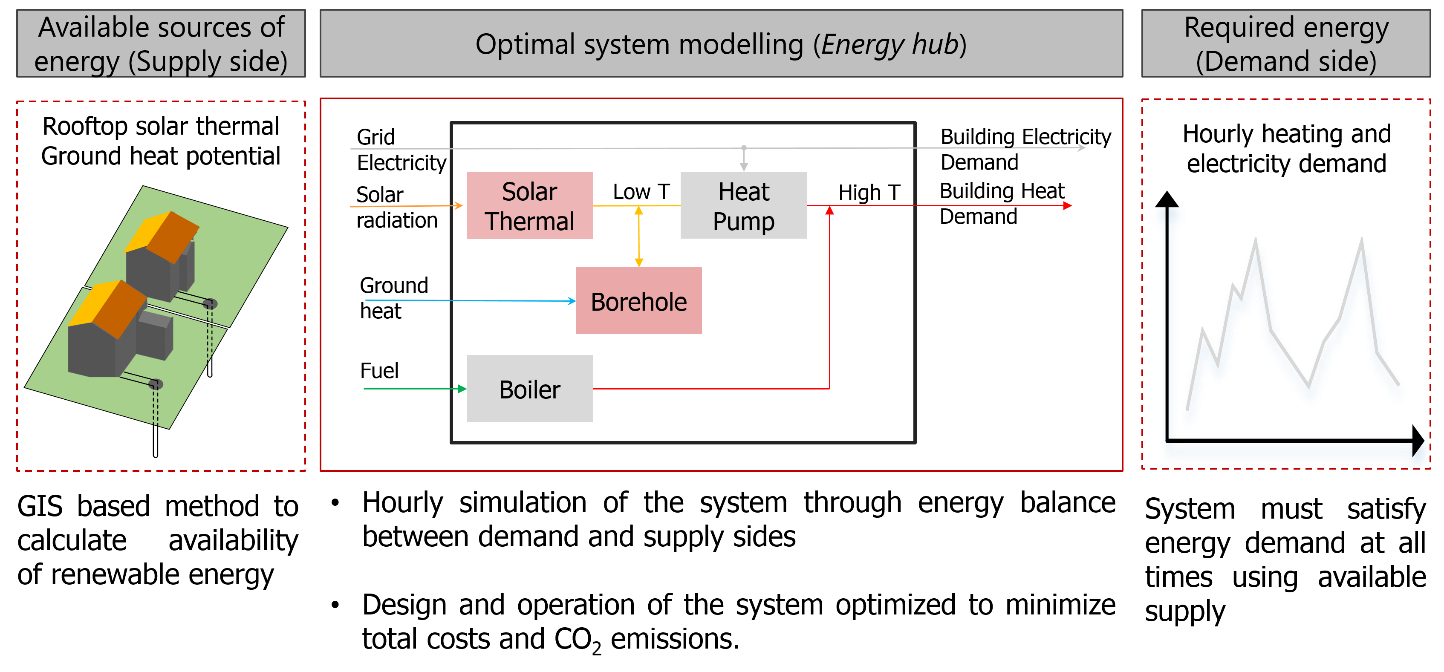Renewable potential assessment
Building integrated and urban energy supply potentials are required for the useful investigation the energy supply side of urban energy systems. These renewables include solar energy, wind energy, hydropower, bioenergy, environmental heat, etc. Methods for time-resolved evaluation of potentials are developed using GIS and other simulation techniques.
Geo-spatial aspects of urban energy systems
Solar thermal collectors and ground source heat pumps (GSHPs) are one of the most commonly used renewable energy technologies for delivering heat energy to buildings. These technologies can either be installed as standalone systems within individual buildings (decentralized) or locally at the district level using pipe networks. There exists a tradeoff between decentralized and centralized installation of these systems in terms of total costs and carbon dioxide emission savings, which is affected by the spatial and temporal availability of solar irradiation and ground heat. Furthermore, these technologies are suitable for delivering heat energy at relatively low temperature which necessitates either the use of auxiliary heating technologies or demand side measures such as building retrofit.
This project in the framework of the SCCER FEEB&D intends to quantitatively evaluate the tradeoff between decentralized and centralized renewable energy based heating systems for residential buildings, focusing on their spatial and temporal potential.
Publications
Mavromatidis G, Orehounig K, Carmeliet J. (2015) Evaluation of photovoltaic integration potential in a village. Solar Energy – Special Issue Solar world congress 2015, Vol 121, 152-168.
Mavromatidis G, Orehounig K, Carmeliet J. (2015) Evaluation of solar energy integration potential in a neighborhood. In: 14th International Conference of the International Building Performance Simulation Association (IBPSA), BS 2015, Hyderabad, India, December 7th – 9th 2015.
Miglani S, Orehounig K, Carmeliet J. (2015) A method for generating hourly solar radiation on building rooftops accounting for cloud cover variability. In: CISBAT 2015, Lausanne, Switzerland, September 9th – 11th 2015.
Miglani S, Orehounig K, Carmeliet J. (2015) A GIS based borehole design methodology for urban areas taking into account long term ground temperature change. Poster presented at: International Land Use Symposium (ILUS) 2015, Dresden, Germany, November 11th – 13th 2015.
Miglani S, Orehounig K, Carmeliet J. (2016) Assessment of the ground source heat potential at building level applied to an urban case study. In: 19. Status-Seminar “Forschen für den Bau im Kontext von Energie und Umwelt”, Zürich, Switzerland, September 8th – 9th 2016.
Orehounig K, Mavromatidis G, Derome D, Carmeliet J. (2015) Photovoltaic panels as a main component of energy sustainable communities: comparative energy analysis of a village under Swiss and South African climatic loads. In: Third Southern African Solar Energy Conference, SASEC 2015, Skukuza, Kruger National Park, South Africa, May 11th – 13th 2015.

